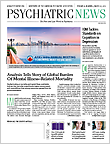Understanding the genetic origins of autism spectrum disorders has come a long way over the last decade but still has a long way to go to produce clinically useful data, said genetics researcher Evan Eichler, Ph.D., in a February 18 talk at the National Institutes of Health in Bethesda, Md.
“We have a handle on perhaps 30 percent of the genetic ‘cause’ of autism now, but we haven’t proven the case for more than 1 to 2 percent,” said Eichler, a professor of genome sciences at the University of Washington in Seattle and a Howard Hughes Medical Institute investigator.
Much of the progress in recent years has come through use of a “genome-first” method, looking for large but rare copy-number variations (CNVs).
The approach involves genome- and exome-sequencing samples from thousands of individuals with developmental delays but with no family history of autism, then also sequencing both parents and at least one unaffected sibling. Results are then compared with data from healthy controls.
“We start with the genetics and let that sort out individuals with a common genetic etiology,” he explained. “Then we study those individuals more carefully to understand if there are subtleties about the phenotype that have been missed because of the generic diagnosis. You want to make sure you identify these distinctions early on at the molecular level.”
Large CNVs (either deletions or duplications) are individually rare but collectively common, said Eichler. There is an excess of these large CNVs in patients with autism spectrum disorder compared with controls, and that excess predisposes them to the disorder.
The approach shows that CNVs are an important mechanism that leads to children having developmental delays or autism, even though any one variation appears only once or twice in 10,000 individuals, he said. Most are benign, and the ones affecting development may appear de novo in less than 1 percent of affected children. They are rare because they contribute in some way to the health status of the individual, and natural selection keeps them from reaching a high frequency in the population.
Hence, one might say that every child with autism is unique because a different mutation in a different gene is responsible for the outcome, said Eichler.
“The chances of a pediatrician seeing two children with the same genetic cause in 30 years is almost zero,” he said. There are now about 200 likely candidate genes, but that is likely a fraction of the real total that produces an autism phenotype.
Through 2014, researchers worldwide have compared 30,000 autism cases with 20,000 controls. Eichler cited several examples of genes that underscore the complexity of genetic studies in autism.
For instance, there were 13 truncating mutations of the gene CHD8 found in 8,813 cases, compared with none in 8,792 controls. About 87 percent of the patients had autism, 80 percent had macrocephaly, 73 percent had gastrointestinal problems until puberty, but fewer than 50 percent had intellectual disabilities.
CNVs in the DYRK1A gene pointed to eight mutations in 7,290 cases compared with none in 8,693 controls. Of the cases with this mutation, 100 percent had intellectual disability, 100 percent had microcephaly, 83 percent had autism with impaired expressive language, 89 percent had late-onset epilepsy, and facial and foot abnormalities were also common.
For the ADNP gene, the researchers found 10 loss-of-function mutations in 5,776 patients, compared with just one in 8,231 controls. However, the pattern of symptoms was quite different in this group: 100 percent had intellectual disability, 100 percent had autism spectrum disorder, 90 percent showed almost complete loss of expressive language, and 88 percent had a high hairline and frontal bossing indicating early brain overgrowth.
“ADNP is now seen as a specific syndromic form of autism,” said Eichler.
Teasing out different subtypes of autism will be a first step to finding more specific treatments, he said: “Treating microcephaly is not the same as treating macrocephaly.”
Overall, the study of CNVs led to rethinking of the approach to developmental delays and autism, suggesting that they are not inherited but are sporadic, de novo diseases.
“Genetics is just the beginning,” Eichler stated. “Once you know what type of autism a child has, you will know what protein-protein interaction network is involved. If there is a therapy, it will be applied to that subset of patients. This is a model of precision medicine, but it starts by working out the genetics.” ■
An abstract of “The Contribution of de Novo Coding Mutations to Autism Spectrum Disorder” can be accessed
here.
